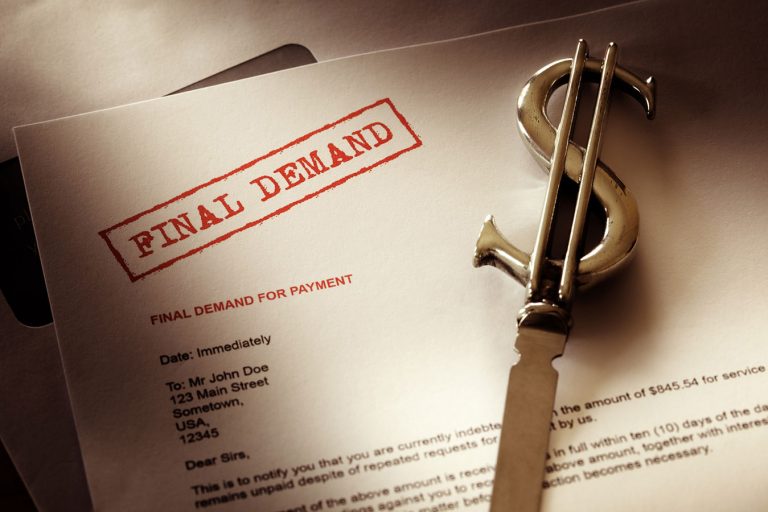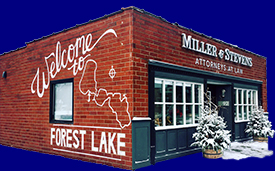Most often, a typical phone call I receive from a landlord looking for an eviction attorney involves a hold-over tenant with a prior lease, a tenant who is behind on rent payments, or a tenant who is in material violation of their lease agreement. If there is a binding lease in effect between the landlord and tenant, the basis for the eviction is commonly nonpayment of rent or a material breach of the lease. By contrast, if the tenant has occupied the rental property for the full lease under a fixed-term and the tenancy converts to month-to-month periodic tenancy after expiration of the lease term, the landlord and tenant have a mutual obligation to provide notice to the other party in the event that one of the parties intends to terminate and move on. Typically, the landlord may feel it is best to rent the rental space to another prospective tenant, or the tenant may have a plan for other rental housing or to purchase their own real estate to live in.
In any event, if the landlord intends to move forward and start the eviction process involving a particular hold-over tenant, it is easiest and usually most effective to provide the tenant with statutory notice to vacate the property. By providing notice, the tenant is allowed an amount of time set on a case-by-case basis to vacate the property. The notice covers the landlord should they pursue eviction proceedings to recover possession of the rental property, if the tenant chooses to stay beyond the end date listed in the notice. The effective date is the date that the tenant receives the notice. For example, if the tenant stays beyond the date of the month in which the landlord has indicated that the tenancy will end, the landlord now stands in a position to pursue an eviction action in Minnesota district court against the tenant for failing to vacate after proper written notice was given. It is not uncommon for the landlord to provide the tenant with notice to vacate the property, while also contemplating the same tenant’s failure to stay current on rent payments. For these reasons, sometimes landlords pursue an eviction on both basis: failure to vacate after proper notice and nonpayment of rent, although it is common for the landlord to forgo a nonpayment of rent claim if adequate notice has been provided.
Filing and Service
First, legal counsel in an eviction case will gather the necessary documents and prepare the eviction complaint. In the preparation phase, counsel should be mindful of pleading the necessary parties to the case and including accurate statements regarding the lease agreement and that disclosure was made to the tenant of the individuals or entities with managerial responsibility of the premises. Many landlords and business owners hold real estate in a member owned limited liability company or an LLC. From a business perspective, there are reasons owners choose to secure real estate in an LLC. To argue a case in Minnesota district court, however, an LLC must have an attorney representing the entity.
Lawsuits in Minnesota often originate by personal service of process on the opposing party and then are subsequently filed with the district court, which generates a case file. However, summary eviction proceedings unfold in a more traditional fashion of, “file then serve.” Once the eviction complaint is filed, the district court will set an initial appearance on the case within 7-14 days. This expedited timeframe means that the landlord’s counsel needs to act quickly to serve the tenant with the summons, complaint, and notice of hearing at least 7 days before the first appearance. Even more issues arise when personal service cannot be completed as the documents then need to posted at the premises, or on the front door by the process server.
The Initial Appearance
Second, the initial appearance gives the parties an opportunity to discuss issues in the case and determine if there is a path forward toward settlement. In many other types of cases, settlement discussions are centered around one thing – money. Yet in the context of an eviction, settlement discussions involving money could take a back seat to the landlord’s desire for recovery and repossession of the premises. At this point in the case, the landlord might be amenable to allowing the tenant an additional period of time to voluntarily leave the rental property with adequate time to remove their personal belongings while also relinquishing the keys back to the landlord. In other instances, the landlord’s patience has worn thin, and the amount of time requested by the tenant simply does not align with the landlord’s timeframe to retain possession. If the two parties can agree on settlement terms, the judge or referee will instruct the parties to state the agreement on the record. If no agreement is reached, the judicial officer has discretion on how to proceed, which includes setting the case for an evidentiary hearing or court trial.
The Trial
Third, the judicial officer assigned to the matter can set the case for trial. If that happens, the court will instruct the parties regarding discovery, witness and exhibit lists, and subjects about which they will testify. The parties will need to exchange exhibits and as with many cases held via the Zoom platform in 2025, exhibits and evidence to be introduced at trial need to be uploaded into the Minnesota Digital Exhibit System or “MNDES.” An eviction trial is conducted similarly to other cases in that both parties present evidence and have the opportunity to tell their side of the story through oral testimony. Generally, the landlord will want to show that there was a binding lease agreement in effect and sufficient grounds exist for the judge to order an eviction, which is supported by the evidence. The tenant may want to argue that inconsistencies exist in the landlord’s case. Inconsistencies might include improper notice or arguing defenses against the landlord’s claims. For example, the tenant may argue the landlord breached the covenants of habitability that is implied in every residential lease. After hearing testimony and admitting evidence, the judge will issue an order and enter judgment of the court.
Recovery of the Premises
If the judge finds for the landlord, the landlord will be entitled to recovery of the premises. The judge can stay the order or writ of recovery to regain possession of the property for up to 7 days. At that time, the tenant still has the opportunity to voluntarily vacate the premises without being forced out pursuant to the court order. However, if the tenant chooses to remain in the premises beyond the posting of the writ of recovery of premises and order to vacate, the landlord may arrange for the county sheriff with authority over the matter to stand-by and remove the tenant, using force if necessary, for the purpose of returning possession to the landlord. A writ of recovery issued by a district court in Minnesota is valid for 30 days.
The Personal Property Dilemma
There are legal requirements imposed on the landlord for storage and care of the tenant’s personal property left behind due to abandonment issues or the eviction process. Legally, I always inform clients of the statutory law at issue on this point, but discussions with them tend to be more practical and case specific. Moreover, the landlord is pressed with making business decisions about how to proceed with storage and care of personal property that remains once a tenant vacates. Either way, it is important for legal counsel in an eviction case to talk with the landlord about their obligations, so they have all the necessary information when making strategic decisions near the end of the eviction process.






